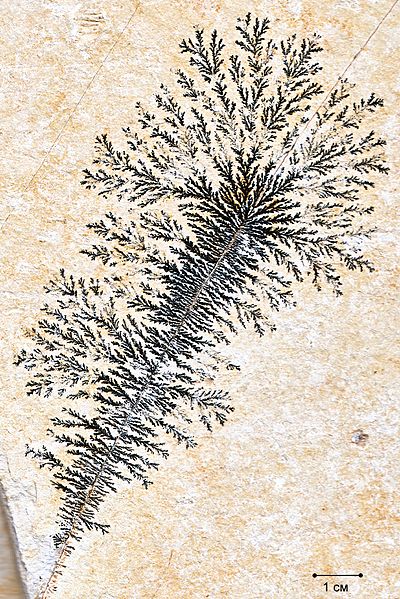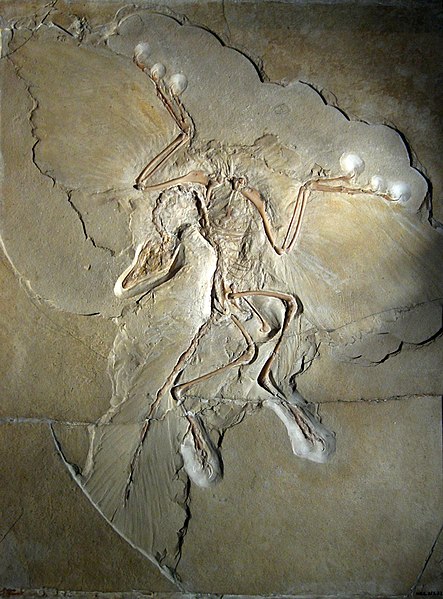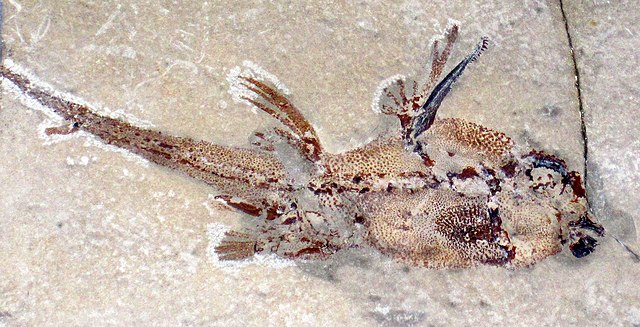The Solnhofen Limestone or Solnhofen Plattenkalk, formally known as the Altmühltal Formation, is a Jurassic Konservat-Lagerstätte that preserves a rare assemblage of fossilized organisms, including highly detailed imprints of soft bodied organisms such as sea jellies. The most familiar fossils of the Solnhofen Plattenkalk include the early feathered theropod dinosaur Archaeopteryx preserved in such detail that they are among the most famous and most beautiful fossils in the world. The Solnhofen beds lie in the German state of Bavaria (Bayern), halfway between Nuremberg (Nürnberg) and Munich (München) and were originally quarried as a source of lithographic limestone. The Jura Museum situated in Eichstätt, Germany has an extensive exhibit of Jurassic fossils from the quarries of Solnhofen and surroundings, including marine reptiles, pterosaurs, and one specimen of the early bird Archaeopteryx.
Outcrop of the Solnhofen Limestone
A brittle star fossil from the Solnhofen Limestone
Dendrites associated with a fissure on a bedding plane.
Adam and Eve (Fall of Man), 1514 by Ludwig Krug, Bode-Museum Berlin
A Fossil-Lagerstätte is a sedimentary deposit that exhibits extraordinary fossils with exceptional preservation—sometimes including preserved soft tissues. These formations may have resulted from carcass burial in an anoxic environment with minimal bacteria, thus delaying the decomposition of both gross and fine biological features until long after a durable impression was created in the surrounding matrix. Fossil-Lagerstätten span geological time from the Neoproterozoic era to the present.
Well-preserved basal arthropod Opabinia from Burgess Shale Lagerstätte (Middle Cambrian)
Archaeopteryx specimen from Solnhofen Lagerstätte (Upper Jurassic)
Fossil specimen of Echinochimaera from the Bear Gulch Limestone (Middle Carboniferous)
An early Stromatolite








